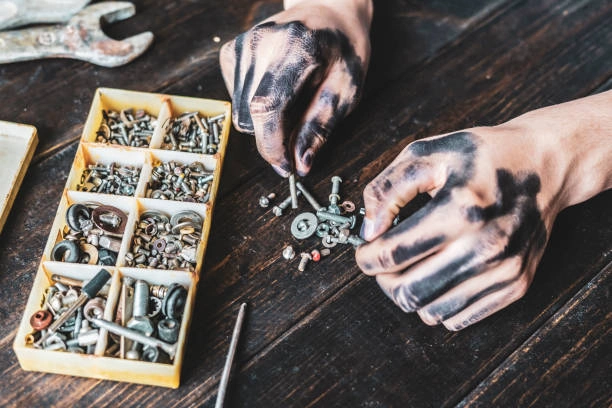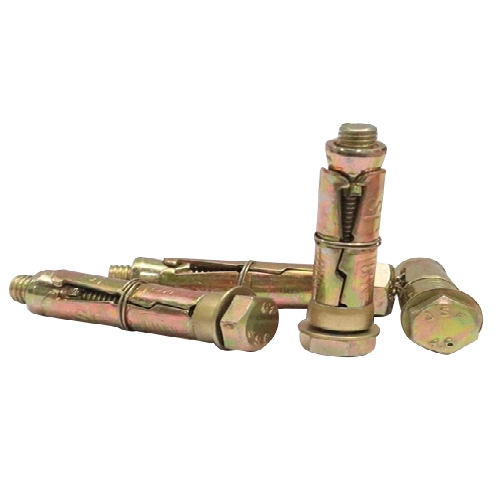Different Types of Self-Drilling Screws and Their Uses
Self-drilling screws have become a must for industrial standards in every do-it-yourselfer’s equipment for construction and housework, taking away the pains of most joining jobs that used to be done with a drill beforehand. With this simple innovation, joining tasks becomes easy and fast for pros and amateurs alike.
Choosing the right type of self-drilling screw is a fundamental step that ensures long-lasting installation. The construction Industry in India is expected to reach $1.4 trillion by 2025, Which highlights India’s high ambitions and commitment to construction and renovation. (source: InvestIndia)
But some self-drilling screws differ from others in structure. They exist in many varieties, designed for different materials and applications. While some are manufactured from metal, wooden varieties are sandwiched among them, many of which have plastic heads. The shape of the tip, thread type, and head design all differ along with their objective.
Understanding these differences will help you figure out the type of screw to use in your project, whether you will be hanging drywall, building a deck, or working with sheet metal.
What is unique about self-drilling screws for metal is that they have a drill bit built into the tip. At the same time, this design allows them to drill their own pilot hole while being driven into the material. They are applied to metal treatment, woodworking, and construction—these screws provide a reliable and effective fastening solution.
Types of Self-Drilling Screws
1. Hex Head Self-Drilling Screws
These screws are a popular choice due to their durability and ease of use. The hexagonal head provides a secure grip for the drill or driver, reducing the risk of slipping.
These screws are often used for fastening metal sheets, making them ideal for roofing and cladding applications, etc.
2. Pan Head Self-Drilling Screws
Pan head self-drilling screws feature a flat, rounded head that sits flush with the material’s surface.
This design is perfect for applications where a smooth, finished appearance is essential. They are often used for installing metal shelves and other projects requiring a neat finish ie, kitchen.
3. Flat Head Self-Drilling Screws
Flat-head self-drilling screws are designed to sit flush with the material’s surface, providing a clean and smooth finish.
These ones are commonly used in woodworking projects where aesthetics are important, for example, furniture pieces with a seamless look.
4. Stainless Steel Self-Drilling Screws
Stainless steel self-drilling screws are resistant to rusting, making them ideal for outdoor and underwater applications.
Their durability and strength make them a dependable choice for projects exposed to harsh weather conditions, such as securing outdoor decking or bathroom fixtures.
5. Self-Drilling Screws for Metal
Self-drilling screws for metal are specifically designed to pierce metal surfaces without much effort.
These screws come with a sharp, pointed tip that can quickly carve through metal sheets, making them essential for metalworking and automotive projects, like installing metal roofing.
6. Self-drilling Screws for Steel
Self-drilling screws for steel are designed to handle the hardness of steel surfaces.
They are commonly used in heavy-duty construction projects where strength and durability are crucial, such as building a steel-framed shed.
How to Use Self-Drilling Screws
Using self-drilling screws is straightforward, however, a few tips can ensure optimal results:
1. Select the Right Screw: Choose the right type and size of self-drilling screw for the project that you are working on.
2. Use the Correct Tool: A power drill or driver with the right bit size ensures efficient & smooth installation.
3. Apply Steady Pressure: Try to maintain steady pressure while driving the screw to prevent stripping of the material that you are working on.
4. Avoid Over-Tightening: A golden tip, over-tightening can damage the screw and the material, so stop when the screw is securely in place.
What are the applications of Self-Drilling Screws?
There are such benefits to using self-drilling screws. They save a lot of time since one does not have to engage in pre-drilling, reduce the cases of splitting of materials, and produce a good, strong security hold. They can be used in various materials, these may include metal, wood, and plastic. Some of the common applications include:
1. Roofing and Cladding
Self-drilling screws are broadly used in roofing and cladding due to their unique ability to pierce metal sheets easily. They provide a secure and weather-resistant fastening solution, enhancing the structure’s durability.
2. Metalworking
In metalworking, self-drilling screws are like the bread and butter for assembling metal frames, panels, and structures. Their sharp tips and strong threads make them ideal for piercing and holding metal surfaces.
3. Woodworking
For woodworking projects, self-drilling screws are the best in class and offer a clean fastening solution. They are perfect for assembling furniture, cabinets, and other wooden structures without the requirement of pre-drilling.
4. Automotive Industry
In the automobile industry, the screws drill into different metal parts during assemblage. This feature of self-drilling screws to quickly pierce through the metal surface makes them of importance in both the manufacture and repair of automobiles.
Choosing Raj Industries For High-Quality Self-Drilling Screws
You shouldn’t waste any more time as Raj Industries stands at the forefront of self-drilling screw manufacturing, offering unparalleled quality and reliability. Our commitment to excellence is evident in our state-of-the-art testing facilities, which include torque testers, hardness testers, UTM machines, drill testing equipment, and more.
These high-tech machines let us evaluate, with the best detail, the strength, longevity, and functionality of our screws so that they will exceed industry standards.
We execute strict testing and inspection for batches of screws within our mission to assure uniformity and reliability, ensuring utmost carefulness meets our very exacting quality standards, in both material composition and dimensional precision.
As an ISO 9001-certified business, we are compliant with globally accepted quality management guidelines, showing our determined commitment to providing products and services that are made with customer satisfaction in mind.
When it comes to sourcing high-quality screws and fasteners, construction professionals consistently turn to GYPdrive. Known for their exceptional durability and strength, GYPdrive’s Black Screws and Gypsum Screws meet the demanding standards of the construction industry, ensuring every project is a success
FAQs
1. What materials can self-drilling screws be used on?
Self-drilling screws can be used on materials like metal, plastic, or wooden materials, and even on a material hardness class like steel and stainless steel.
2. Are self-drilling screws suitable for outdoor use?
Yes, particularly stainless steel self-drill screws, able to offer excellent resistance to corrosion and be ideal for outdoor and marine applications.
3. How do I prevent self-drilling screws from stripping?
Do not over-tighten, but press with a steady force. Make sure your drill bit is of the same size as your screw.
4. Can self-drilling screws be used in woodworking projects?
Absolutely. They are a clean and quick-fastening solution for assembling furniture, cabinets, and other wooden constructions.







